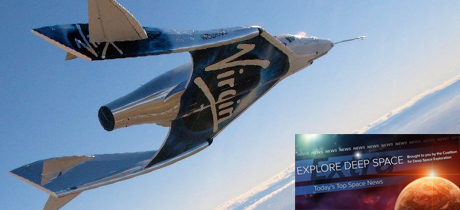In Today’s Deep Space Extra… On Sunday, The House Appropriations Committee released its draft FY2022 Commerce-Justice-Science bill proposing $25.04 billion for NASA, a $1.77 billion increase over FY2021, and $240 million more than the Biden Administration proposed for 2022. NASA and Northrop Grumman finalize contract to build the Gateway’s HALO.
Human Space Exploration
House Appropriators propose bigger boost for NASA than Biden
Coalition Member in the News: Aerojet Rocketdyne, Boeing, Lockheed Martin
Spacepolicyonline.com (7/11): Draft legislation released by the House Appropriations Committee on Sunday includes $25.04 billion in 2022 for NASA, $1.77 billion more than FY2021 and about $240 million more than President Biden’s request of $24.80 billion for FY2022. Compared to the President’s 2022 budget request, the Exploration, Science, and Aeronautics accounts receive boosts, totaling about $458 million. Space Technology, Space Operations, and Safety, Security and Mission Services get cuts totaling about $220 million. This works out to about $400 million more for Exploration than requested by the White House, much of which will go to the Space Launch System, Orion, and Exploration Ground Systems. The Exploration R&D budget, which funds the Human Landing System (HLS), would get a $150 million increase, but it is unclear how much of it is intended for HLS development. The Commerce-Justice-Science (CJS) subcommittee of the House Appropriations Committee meets today at 3 p.m. EDT for markup of the NASA and NOAA budgets for 2022. The outcome moves to the full House Appropriations Committee for action on Thursday.
NASA awards contract to Northrop Grumman to build Gateway module
Coalition Member in the News: Maxar, Northrop Grumman
Space News (7/9): On Friday, NASA announced it finalized a $935 million contract agreement with Northrop Grumman to complete the development of the Habitation and Logistics Outpost, or HALO, which along with the Maxar-built Power and Propulsion Element are set to form the first elements of the lunar orbiting Gateway. HALO is based on the Cygnus spacecraft, but extensively modified with docking ports, enhanced life support and other subsystems. Functioning with international and commercial partners, the Gateway will serve as an outpost intended to help establish a permanent human lunar presence and prepare for human expeditions to Mars.
Nauka module to ISS filled up with fuel, no remarks – Roscosmos chief
TASS of Russia (7/10): Russia is preparing for a July 21 launch of the Nauka Multipurpose Laboratory Module to the International Space Station. After years of delay, Nauka is set to lift off on a Proton rocket from the Baikonur Cosmodrome in Kazakhstan on a journey to dock at a Russian segment port now occupied by the Pirs module. Besides research volume, Nauka will provide an additional cosmonaut sleeping quarters and toilet. (Editor’s note: TASS is a Russian state-owned media outlet.)
Space Science
Increasing demands putting pressure on Deep Space Network
Space News (7/10): Growing numbers of space missions beyond low Earth orbit and the approach of NASA’s Artemis mission are stressing the capabilities of NASA’s Deep Space Network. This collection of antennas in California, Spain and Australia enables communications with spacecraft beyond Earth orbit. A current shortfall in capability of 20 percent is forecast to grow to 40 percent, Brad Arnold, manager of the Deep Space Network (DSN) at the Jet Propulsion Laboratory, told a July 7 gathering of the steering committee of the planetary science decadal survey. A commercial option does not appear to be a viable choice, according to Arnold.
Other News
Branson flies to the edge of space on SpaceShipTwo
Space News (7/11): Virgin Galactic founder Richard Branson and other company employees flew to the edge of space on the SpaceShipTwo suborbital vehicle July 11, the culmination of an effort that started nearly 17 years ago.
Another free-falling Chinese rocket body hit Earth last week
Defense One (7/9): On July 3, China was responsible for the uncontrolled re-entry of a second rocket body, the Long March 2F that lifted off on June 17 with the Shenzhou-12 spacecraft. A larger, 100-foot section of a Long March 5B fell back to Earth in May after boosting the cornerstone module for China’s new space station. The incidents raise a question: is China allowing its rocket elements to fall where they may?
China’s Long March 6 launches five satellites
NASAspaceflight.com (7/9): A Chinese Long March 6 rocket launched what are believed to be five commercial remote sensing satellites on Friday. The satellites are assumed to have been designed to gather intelligence from electric signals and other systems that are utilized by foreign governments or groups, and used in weapons, communications, or radar systems.
What’s Happening in Space Policy, July 11-17, 2021
Spacepolicyonline.com (7/11): The U.S. House Appropriations Committee is set for markup of fiscal year 2022 NASA and NOAA budget measures this week, starting with action by the Commerce, Justice, and Science subcommittee on Monday, then the full appropriations panel on Thursday. Also this week, the American Astronautical Society is hosting the Glenn Memorial Symposium from Tuesday through Thursday. The symposium will feature a keynote from NASA Administrator Bill Nelson on Wednesday. Symposium topics include an Artemis update, lunar surface exploration and power, nuclear propulsion and space traffic management. NASA’s Aerospace Safety Advisory Panel (ASAP) will meet virtually on July 15, 2021 from 2:00-3:30 p.m. EDT.

